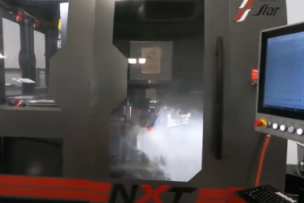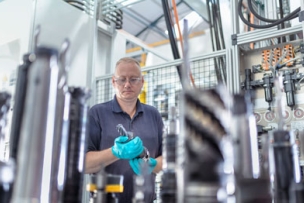Users are also getting more comfortable with voice-activated technology at home—and in the workplace. Mobile operating systems in Google’s Android and Apple’s iOS are becoming more ubiquitous and dominate the mobile market—and industrial-centric apps are here—including those for inventory management, especially when tied into commerce and order management systems.
“The definition for what is a wearable itself is shifting today,” says Jim Hilton, director of vertical marketing strategy for manufacturing with Zebra Technologies, in an interview with Better MRO. “Things [in industrial environments] are moving from handheld scanners to ring and glove scanners to monocular and binocular smartglasses.”
Another Inventory Management Catalyst: “Actionable Visibility”
So there is technology convergence and user interest in mobile adoption—but there’s another key element: Plant and production management being able to see and know the entire operation in real time, says Hilton.
The idea goes like this: The more information there is about the operation, the better, more cost-effective and efficient business decisions can be made about production output.
“So a bar code is essentially about data entry: You scan the information that tells management the location and condition of goods—and whether they need to be replenished or not,” says Hilton. “When you industrialize connectivity, the potential is tremendous … From bar codes to passive RFID to active RFID, the potential to know about the state of assets and goods has never been more informed.”
Combined with connectivity, the information that can be known today, say compared to thirty years ago, is tremendous. Hilton shared a slide about the power of mobile technology that said: “Location solutions are important, growing drivers for visibility.”
“Unplanned production time is a terrible thing,” says Hilton. “Smart, active sensors might allow you to know, for example, the volume of production-line supplies on an auto-factory floor. Perhaps must-have parts are getting low based on volume—and these sensors can help alert workers that more needs to be replenished—and when.”
Smart sensors allow manufacturers to make informed choices—and to have reasonable estimates for forecasting and predicting events and outcomes.
Does your shop tend to hoard supplies? Read how to become more lean: “To Optimize MRO, Get Smart with Lean Supply Chain Management.”
A Voice-Activated Future in Machining & Inventory Management?
The conditions are ripe for consumer-like experiences in manufacturing. It’s already happening in warehouse environments and in CNC machining. Technologies that easily command automated functions could be primed for adoption. Enter voice-command technology and artificial intelligence.
“Rather than racing through shelves, packers can say aloud which items they need for each order, and digital assistants will locate the stock and bring it to the packing area,” writes Kayla Matthews for ThomasNet in the article “The Pros and Cons of Warehouse Digitization.”
With an impending skills gap, manufacturers may want to take advantage of those technologies that condense, eliminate or reduce the volume of manual intervention. Production output is not expected to retract anytime soon for most manufacturers. So finding workers of the future could be helped by systems that work well with natural and organic human experiences.
“Having to hold, point and pull a trigger is mechanical, and takes time and thought,” says Bruce Stubbs, director of supply chain marketing at Honeywell Safety and Productivity Solutions, in an interview in Modern Materials Handling. “Speaking, listening and seeing are second nature. At this point, the idea of utilizing synergies between man and machine is not a far reach but a small nudge.”
At last year’s IMTS in Chicago, machine-maker Makino showed off its Athena system—a voice-activated machine command center for operators. It is not clear to date if this kind of technology will permanently take off in machine shops—but the opportunity to see what it can do has plant management and lean manufacturing proponents very interested in its potential.
Imagine a digital system being able to tell operators about percentage of tool wear in real time—or other important active functions within a machine—allowing the operator to proactively react and avoid unplanned downtime or plan and adjust setups and maintenance on the fly.
“We do not fully appreciate how much of the information a machine tool operator might need is located in different places, and therefore how difficult or time-consuming it is to access and employ that information,” says Peter Zelenski, editor in chief of Modern Machine Shop, after taking a test drive with Athena. “Commanding the machine verbally, along with obtaining accurate information about the machine, tool or job as needed, essentially just by asking into the air, promises to allow skilled operators to work far more accurately and effectively than is practical for them to do today.”






Talk to Us!
Leave a reply
Your email address will not be published. Required fields are marked *